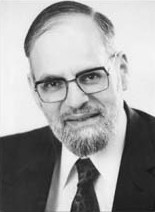$16 Muffins, A Recipe for Bad Economics
The AP posted a story where the Department of Justice paid $16 apiece for the morning muffins at a recent conference. While the author rightly condemns the government for wasting tax money, the article takes an odd turn. The article states,
"Which all kind of misses the most compelling issues. If you did spend $16 on a muffin, what would it look like? How would it taste? Is it even possible?"
It then goes on to say,
"The typical muffin baked in an institutional setting such as a hotel costs about 50 cents or less, not counting labor. If you go crazy extravagant and reach for the top-shelf organic flour, maybe some hand-harvested wild blueberries from Maine and fancy sugar, you're still going to max out around $1 per muffin on raw ingredients."
Talk about missing the "most compelling issue!" The author makes a typical economic error, which should have been learned in the most basic economics class, and that point is this: the price of any good or service is determined by the interaction of supply and demand. It is NOT determined by the price of the inputs. If the cost of materials determined the price of anything, then no business would go out of business, ever.
Let me repeat this necessary fact: Costs do not determine price.
Too many people simply do not understand this principle. Too many people think that retailers simply take wholesale prices, mark them up and then viola! Done. If we stop to think for a moment, if this were the case, then why are there sales?
Let's take a simple example...
You may have noticed that the price of corn is not that same as it was a few years ago. Today you might see ears of corn selling 3/$1, while just a year or two ago it was selling for 4/$1 or even 5/$1. A few years before that it may have even been 10/$1. Setting aside inflation, the grocer might tell you that the reason he raised his prices is because the wholesaler’s price has gone up. In other words, he says his costs have gone up.
In order to correctly analyze the problem, we need to look beyond the seen and think about the unseen. This technique is called Counter-Factual Reasoning. Counter Factual Reasoning is being able to compare the “seen” world with a hypothetical alternative. When we apply counter factual reasoning, we realize that we need to ask why the wholesalers’ price of corn rose. We begin the process of tracing the change in price to its root causes. After some thought, we realize that the problem is ultimately caused by an increase in demand. Corn has a wider variety of uses than just eating it on the cob. For example, it is used as a sweetener in drinks and it is also used to create ethanol for cars. With the increase in the number of uses for corn, the demand for corn rises. These competing uses each bid for the corn. The result is an increase in the demand for corn, which causes the wholesale price to rise. So while the grocer may tell you that the price is increasing because of supply reasons, the unseen fact is that it is really demand that is driving the price change.
I suppose that I cannot fault the author of the article for getting it wrong. I see that it was just a segue to talk about expensive muffins. But really, using economic fallacies to get to your topic, come on! Can't we do better than that?









